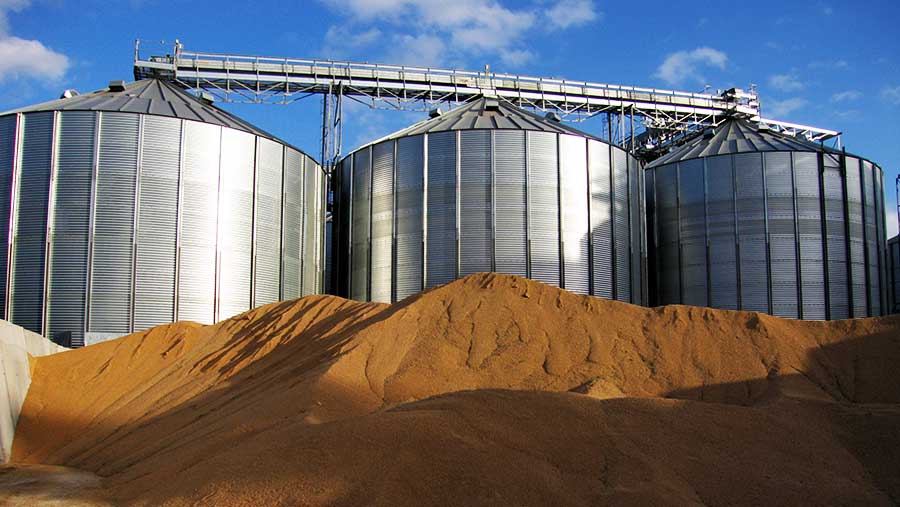Weather and Brexit worries give grain a lift
 Grain storage silos © Andy Drysdal/REX Shutterstock
Grain storage silos © Andy Drysdal/REX Shutterstock Grain markets have had a boost from currency and weather worries, rising by about £2/t over the week to Wednesday.
There are likely to be more short-lived rallies but heavy stocks still hang over the market, warn traders. Those stocks are, however, falling more quickly than expected, with good late season EU exports.
Last week’s storms pushed French wheat prices to a six week high and gave concern for Black Sea region crops as well as those in some other EU member states. The French flooding threatened yields and gave rise to greater disease risk, said AHDB market intelligence.
See also: Access to farm labour if the UK left the EU
With maize availability limited until new crop stocks are available, wheat is increasingly competitive. EU wheat exports are continuing at a good pace, while the UK looks set to reach almost 3m tonnes of wheat shipped – better than expected.
Grain at a glance
- Ex-farm spot feed wheat values at £104/ to £107/t midweek
- UK market nervous on referendum, could produce more short-term selling opportunities
- UK wheat exports could hit 3m tonnes, barley exports at 19-year high, EU exports continue strong
- £12/t July to November
UK barley exports meanwhile look like reaching a 19-year high of 1.9m tonnes, compared with 1.5m tonnes the previous year.
The latest Defra grain supply and demand figures also show animal feed use of wheat at 7.083m tonnes, slightly higher than the previous estimate.
This all means that commercial end of season 2015 crop wheat stocks are set at about 2.5m tonnes, a touch higher than last year.
At analyst ODA, country manager Gary Phillips said it was looking like the first time in four years that world production and consumption of wheat would be in balance. While there were large stocks, 40% was in China and would not be going anywhere, he said.
“The market has been factoring in the relative balance on the wheat book,” said Mr Phillips. “The maize book is looking quite tight too.”
The value in carrying wheat through from old to new crop was still high, with November futures at £121/t against July at £109/t, for those farmers that could cope with the storage demands this imposed.
November wheat prices in Lincolnshire were now around the same value as futures, at around £120/t ex-farm, he said.
Several factors are working on the soya and maize markets, with weather chief among them, affecting the quality and quantity of South American crops and knocking on to some extent into the wheat market.
